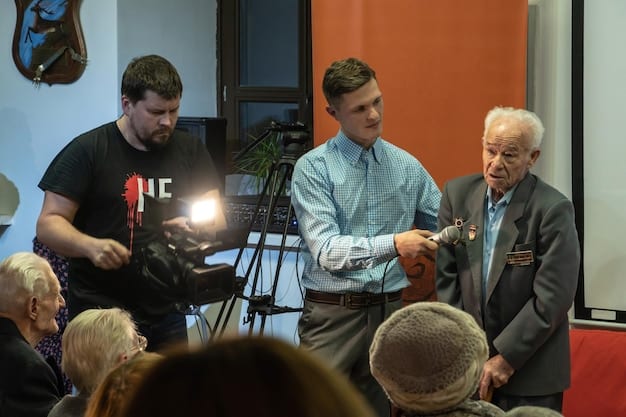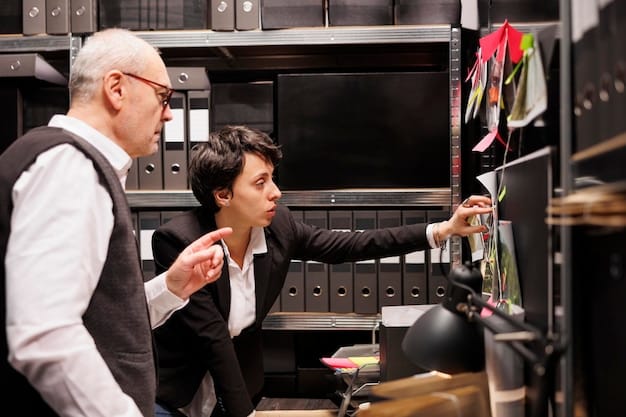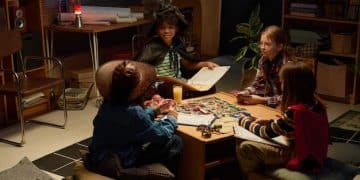The Producer’s Finale Vision: Balancing Budget and Creative Passion

Navigating the complex landscape of television production, a producer must artfully balance creative ambitions with the inevitable realities of budget constraints, especially when crafting memorable and impactful finales.
The world of television production is a high-stakes game where creativity and commerce constantly collide. Nowhere is this more evident than in the production of season or series finales. The **producer’s perspective: navigating budget constraints and creative demands for finales** is a delicate dance between artistic vision and financial realities.
Understanding the Producer’s Role in Finale Production
The producer’s role is pivotal in shaping the final product that graces our screens. They are the linchpin between the creative team, the studio executives, and the financial backers, ensuring that the show’s vision is realized within the allocated budget. But what exactly does this entail when the stakes are highest—during the finale?
Defining the Scope of Responsibility
Producers are involved in nearly every aspect of the production process. From pre-production planning to post-production editing, their decisions have a profound impact on the show’s overall quality and success. Let’s explore some specifics:
- Overseeing Budget Allocation: Ensuring resources are distributed effectively across departments.
- Creative Input and Guidance: Collaborating with writers, directors, and actors to maintain the show’s artistic integrity.
- Problem-Solving: Addressing unforeseen challenges, such as scheduling conflicts, technical difficulties, or unexpected costs.
- Maintaining Communication: Facilitating clear communication between all stakeholders involved in the production.
In essence, the producer is the captain of the ship, steering the creative and logistical aspects of the show towards its intended destination. Their ability to balance competing priorities is essential to delivering a successful finale.
Ultimately, understanding the producer’s role is fundamental to appreciating the complexities of TV show creation. Their responsibilities stretch far beyond simply managing money; they are deeply involved in the creative and logistical orchestration required to bring a compelling finale to life.

The Art of Budget Negotiation for Finales
Budget negotiation is a critical skill for any producer, and it becomes even more crucial when dealing with finales. These episodes often demand more resources due to elaborate sets, special effects, and the desire to create a memorable conclusion. How do producers navigate these financial conversations?
Strategies for Securing Additional Funding
Given the importance of finales, producers often need to negotiate for extra funds to meet the episode’s creative demands. This requires strategic planning and persuasive communication. Here are a few approaches:
- Presenting a Compelling Case: Demonstrating how the finale will drive viewership and boost the show’s overall value.
- Identifying Potential Cost Savings: Proposing alternative solutions that can reduce expenses without compromising quality.
- Highlighting Revenue Opportunities: Exploring ways to monetize the finale through product placements, licensing agreements, or syndication deals.
Producers must effectively communicate the return on investment of increased spending, showing how a well-executed finale can lead to long-term benefits for the show and the studio.
Balancing Expectations with Available Resources
Sometimes, even the most persuasive negotiation tactics fall short. In these situations, producers must find creative ways to balance expectations with the available resources. This may involve:
- Revising the Script: Streamlining scenes and dialogue to reduce production costs.
- Utilizing Existing Assets: Repurposing sets, props, and costumes from previous episodes.
- Finding Alternative Locations: Shooting in less expensive locations that still meet the episode’s visual requirements.
Successfully walking this line requires a producer to be both resourceful and adaptable, ensuring that the essence of the finale remains intact despite financial limitations.
The art of budget negotiation is a delicate balance of persuasion, strategy, and compromise. A skilled producer knows how to advocate for their creative vision while remaining mindful of the fiscal realities that govern the production process, resulting in a finale that is both artistically satisfying and financially responsible.
Creative Demands: Delivering a Satisfying Conclusion
While budgetary limitations certainly influence a finale’s production, the creative demands of concluding a season or series often present the most significant challenges. How do producers collaborate with writers and directors to deliver a satisfying resolution for viewers?

Collaborating with Writers and Directors
The creative team plays a vital role in shaping the finale’s narrative. Producers work closely with writers and directors to ensure that the episode not only fulfills the show’s artistic vision but also resonates with the audience. This collaboration manifests in several ways:
- Story Development: Providing guidance and feedback on the script to ensure a compelling and coherent narrative.
- Character Arcs: Ensuring that character arcs are resolved in a satisfying and meaningful way.
- Visual Storytelling: Working with the director to create visually stunning and emotionally impactful scenes.
The producer serves as a sounding board, offering insights and perspectives that help to refine and enhance the creative output of the team.
Managing Expectations of Fans and Critics
Finales are often subject to intense scrutiny from fans and critics alike. Producers must navigate the complex landscape of audience expectations, striving to deliver a conclusion that is both surprising and satisfying. This requires a careful understanding of the show’s fanbase and the critical discourse surrounding it.
Achieving this delicate balance involves:
- Monitoring Social Media: Gauge audience sentiment and identify key concerns or expectations.
- Engaging with Fans: Host Q\&A sessions or online discussions to address fan questions and concerns.
- Staying True to the Show’s Core Values: Ensure that the finale remains consistent with the show’s established tone and themes.
Ultimately, a successful finale leaves a lasting impression on viewers, solidifying the show’s legacy and ensuring its continued relevance.
Successfully managing creative demands is about fostering collaboration, understanding audience expectations, and staying true to the essence of the show. By working closely with writers, directors, and the audience, producers can create a finale that not only satisfies viewers but also elevates the show’s overall artistic merit.
Embracing Innovation within Constraints
Constraints, whether budgetary or creative, can often stifle innovation. However, seasoned producers view limitations as opportunities for inventive problem-solving. How can producers foster a culture of innovation within a constrained environment?
Leveraging Technology to Enhance Visuals
Advancements in technology have made it possible to create stunning visuals on a limited budget. Producers can leverage these tools to enhance the quality of the finale without breaking the bank. Some popular options include:
- Virtual Sets: Utilize CGI and green screen technology to create elaborate sets and environments.
- Digital Effects: Incorporate digital effects to enhance action sequences, create fantastical creatures, or add a touch of magic to the finale.
- Remote Production Tools: Employ remote collaboration tools to streamline communication between team members and reduce travel costs.
By embracing these technologies, producers can push the boundaries of visual storytelling without exceeding their budgetary limits.
Finding Creative Solutions to Practical Challenges
Producers often encounter unexpected challenges during production, such as inclement weather, equipment malfunctions, or scheduling conflicts. In these situations, creative problem-solving is essential. This might involve:
- Improvising with Existing Resources: Finding alternative uses for existing equipment or props.
- Revising the Schedule: Adapting the shooting schedule to accommodate unforeseen delays.
- Exploring Alternative Locations: Identifying alternative shooting locations that are cost-effective and visually appealing.
The ability to think on one’s feet and find innovative solutions is what sets experienced producers apart.
Embracing innovation within constraints involves leveraging technology, fostering creative problem-solving, and maintaining a flexible mindset. By viewing limitations as opportunities, producers can unlock new possibilities and deliver a finale that is both visually stunning and artistically innovative.
The Role of Post-Production in Elevating the Finale
Post-production is where the final touches are applied to a television finale, and where the true magic often happens. How do producers work with editors, sound designers, and composers to elevate the episode to its full potential?
Working with Editors to Craft the Final Cut
The editor plays a crucial role in shaping the pacing, rhythm, and emotional impact of the finale. Producers work collaboratively with editors to ensure that the final cut aligns with the show’s artistic vision and resonates with viewers. Considerations include:
- Pacing and Rhythm: Fine-tuning the episode’s pacing to create a sense of momentum and excitement.
- Emotional Impact: Selecting the best takes and sequences to maximize the emotional impact of key scenes.
- Continuity and Coherence: Ensuring that the episode flows seamlessly from start to finish.
The producer’s input is invaluable in guiding the editor towards a final product that captures the essence of the show.
Sound Design and Music Composition
Sound design and music composition are essential elements in creating an immersive and emotionally engaging viewing experience. Producers collaborate with sound designers and composers to ensure that these elements complement the visuals and enhance the overall impact of the finale.
The integration of sound design and music might involve:
- Creating Atmosphere: Using sound effects and music to establish mood and create a sense of place.
- Enhancing Emotional Impact: Employing music to amplify the emotional impact of key scenes.
- Supporting the Narrative: Using sound and music to foreshadow events, reveal character motivations, or provide commentary on the action.
The synergy between visuals, sound, and music is what elevates a finale from good to unforgettable.
The role of post-production in elevating the finale is significant. It’s a process that requires close collaboration between producers, editors, sound designers, and composers to create a cohesive and emotionally resonant viewing experience. Paying attention to these elements ensures that the finale leaves a lasting impression on viewers.
Lessons Learned: Preparing for Future Finale Productions
Every finale production serves as a learning experience, providing producers with valuable insights that can be applied to future projects. What are some of the key lessons that producers take away from their finale experiences?
The Importance of Early Planning
One of the most common lessons learned is the importance of early planning. Starting the planning process well in advance allows producers to anticipate potential challenges, secure necessary resources, and fine-tune the creative vision for the finale. The key benefits of early planning include:
- Securing Funding: Allocating budget early allows for better financial planning.
- Streamlining Production: Preparing detailed schedules to save time.
- Avoiding Costly Mistakes: Proactive planning helps to mitigate risks.
With sufficient time, producers can assemble a skilled team, develop a compelling script, and secure the necessary resources to bring their vision to life.
Building Strong Relationships with Key Stakeholders
Another crucial lesson is the importance of building strong relationships with key stakeholders, including writers, directors, actors, and studio executives. These relationships can prove invaluable in navigating creative differences, resolving conflicts, and securing support for the finale. Strong relationships lead to:
- Fostering Collaboration: Creates team dynamics that enhance creativity.
- Resolving Disputes: Easier to solve issues through mutual understanding.
- Gaining Support: Stakeholders are more likely to support the vision.
Ultimately, strong relationships foster a collaborative and supportive environment, which is essential for creating a successful finale.
The lessons learned from finale productions underscore the importance of early planning, strong relationships, and adaptability. By internalizing these lessons, producers can approach future finale productions with greater confidence and expertise, ensuring that each conclusion is even more impactful and memorable than the last.
| Key Point | Brief Description |
|---|---|
| 💰 Budget Negotiation | Securing funds involves presenting a compelling case and finding cost savings. |
| 🤝 Collaboration | Working closely with writers and directors is essential for a satisfying narrative. |
| 💡 Innovation | Constraints can drive inventive problem-solving and lead to new creative solutions. |
| 🎬 Post-Production | The editor shapes the pacing, rhythm, and emotional impact, working with sound and music. |
Frequently Asked Questions
▼
Balancing creative ambitions with budget limitations is a top challenge. Finales often require more resources, so securing additional funding and making strategic compromises become essential.
▼
Monitoring social media and engaging with fans helps gauge expectations. Ultimately, staying true to the show’s core values while delivering something surprising yet satisfying is key.
▼
Technology, such as virtual sets and digital effects, can enhance visuals without overspending. Remote production tools also streamline collaboration and reduce costs effectively.
▼
Post-production significantly elevates the finale through careful editing, sound design, and music composition. Editors craft the pacing, while sound design and music enhance emotional impact.
▼
Early planning and strong relationships with writers, directors, and studio executives are crucial. These foster collaboration, help in securing support, and streamline the overall production process smoothly.
Conclusion
The producer’s journey in navigating budget constraints and creative demands for finales is a testament to their multifaceted skills. By masterfully balancing financial pragmatism with artistic vision, embracing innovation, and fostering collaboration, producers ensure that series finales not only meet expectations but also leave a lasting impact on viewers.





